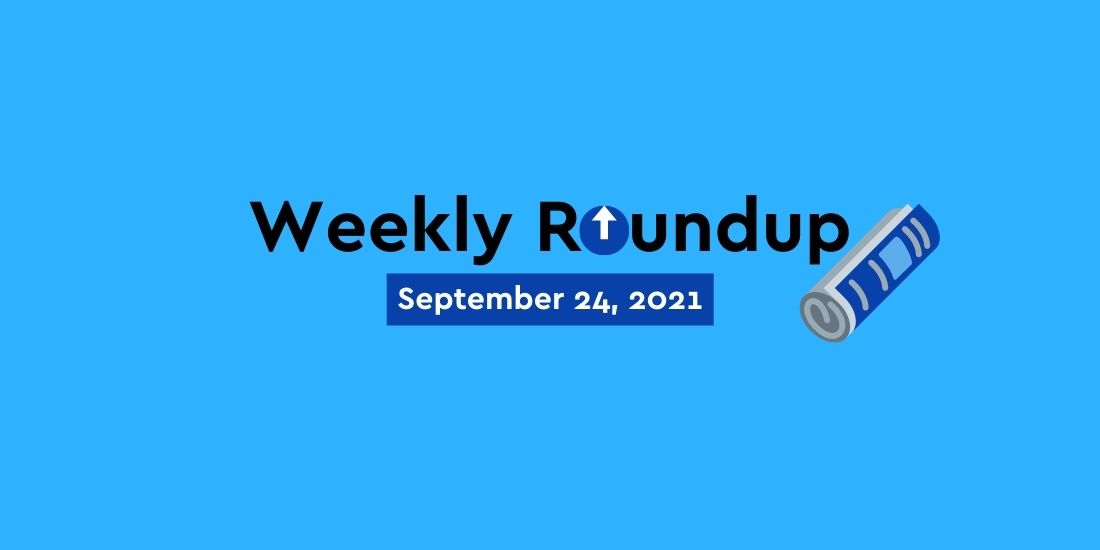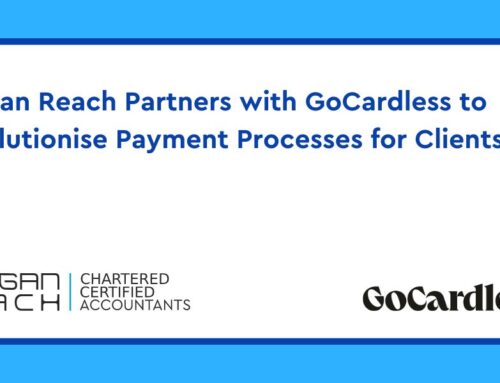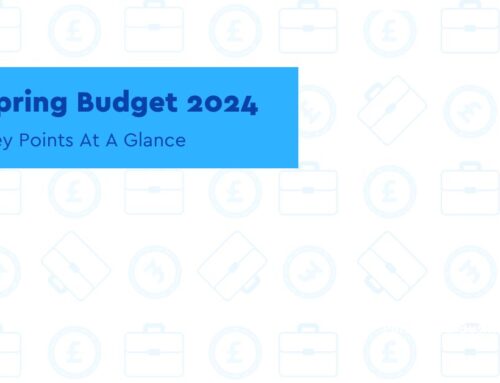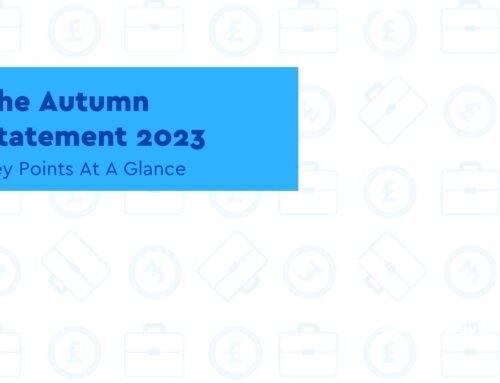What does the National Insurance hike mean for small businesses?
Key Points
- If you’re an employer, the rate changes could make the process of hiring staff more expensive
- Looking ahead, you will likely need to cut back on other spending – such as defined contribution pensions – to fund the change.
Speaking in parliament on September 7, Boris Johnson revealed plans to increase National Insurance contributions by 1.25 percentage points from April 2022.
This will affect employees, employers, and the self-employed across the UK and is designed to fund the health and social care crisis following the pandemic.
As every small business owner knows, National Insurance is a tax paid by employers and employer earnings. It is automatically deducted from workers’ pay packets via the pay as you earn (PAYE) tax code, and goes straight to HM Revenues and Customs (HMRC).
Although the new social care reforms will apply only to England, the tax changes will affect the whole of the UK. But the income from the levy will be distributed across the four nations.
The increase will apply to:
- Class 1 (paid by employees)
- Class 4 (paid by self-employed)
- Secondary Class 1, 1A and 1B (paid by employers)
From April 2022:
- The current 12% rate on earnings between £9,564 and £50,268 will rise to 13.25%
- The current 2% rate on earnings over £50,268 will rise to 3.25%
- Employers will also have to pay more, contributing 15.05% in National Insurance on employees’ earnings over £170 per week, up from 13.8% now.
While newspaper headlines might refer to this as a 1.25% increase, the actual figure is an increase of 1.25 percentage points. However, the new rates actually amount to a 1.25% increase plus 9%.
The increase will not apply if you are over the State Pension age. If you’re an employer, the rate changes could make the process of hiring staff more expensive. Employers pay a percentage of Class 1 National Insurance for each employee, depending on how much they get paid. This could raise recruitment challenges or cause businesses to try to make savings elsewhere.
Another area the new rules will impact is employee benefits. As an employer, looking ahead, you will likely need to cut back on other spending – such as defined contribution pensions – to fund the change.
If you’re a sole trader, the increased rates will be felt harder than most. Paying taxes through Self Assessment means the rate is based on income after business expenses, so in reality it directly affects how much salary you can pay yourself.
You’ll pay Class 4 National Insurance contributions if your annual profit is more than £9,568 (2021/22 tax year).
You’ll still lose an additional 1.25 pence for every £1 earned. Given you pay your own salary, a tax on earnings is therefore also a direct reduction of income.
The Levy will be paid by employed and self-employed individuals and partners earning above the Primary Threshold/Lower Profits Limit of £9,568 in 2021-22. In 2022-23, a typical basic rate taxpayer earning the median basic rate taxpayer’s income of £24,100 would be expected to pay an additional £180 and a typical higher rate taxpayer earning the median higher rate taxpayer’s income of £67,100 would be expected to pay an additional £715.
A salary sacrifice arrangement is a tax-efficient way to arrange contributions to your workplace pension, enabling you and your employees to pay lower National Insurance contributions. The National Insurance savings can be significant for employers.
Shareholders and directors hit by dividend tax rate rise
Key Points
- The hike in dividend tax will hit anyone holding investments outside of a stocks and shares Isa
- Basic-rate taxpayers currently pay 7.5% on any dividends they get over the dividend allowance. From April 2022, this will rise to 8.75%
The government plans to increase dividend tax by 1.25 percentage points, which means investors will have to pay more on the money they get from owning company shares.
The announcement, made on September 7, came alongside proposals for a 1.25 percentage points change in National Insurance rates, and a watered-down state pension increase for retirees for the 2022-23 tax year.
The hike in dividend tax will hit anyone holding investments outside of a stocks and shares Isa, investors who have exceeded their dividend tax allowance and people who run their own businesses and pay themselves dividends.
Dividend taxes are paid on shares, and income you get from funds that invest in shares on your behalf.
In the 2021-22 tax year, you won’t need to pay any tax on dividend income on the first £2,000 you receive, under the tax-free dividend allowance. Above this allowance, you pay tax based on the rate you pay on your other income – known as your ‘tax band’ or sometimes called your ‘marginal tax rate’.
Basic-rate taxpayers currently pay 7.5% on any dividends they get over the dividend allowance. From April 2022, this will rise to 8.75%.
For higher-rate and additional-rate taxpayers, this will rise to 33.75% and 39.35% respectively. Scottish taxpayers pay tax on savings and dividends based on the rest of UK tax bands.
Affected basic rate taxpayers are expected to pay, on average, an additional £150 on their dividend income in 2022-2023. Affected higher rate taxpayers are expected to pay, on average, an additional £403 on their dividend income in 2022-23. Additional and higher rate taxpayers are expected to contribute over 70 per cent of the revenue from this increase in 2022-23.
The government says that due to the combination of the tax-free dividend allowance and the personal allowance, around 60% of individuals with dividend income outside of Isas aren’t expected to be pay dividend tax and aren’t expected to be affected by the changes in 2022-23.
Limited company owners – how do they feel the impact of the dividend tax rise?
Those who own their own limited company are likely to feel the biggest hit from the changes to dividend tax as some will pay themselves in the form of dividends from any company profits, whether in addition to or rather than a salary, which provides a saving on tax.
The current, and new, rates of dividend tax are at least 5% lower than the comparable rest of the UK income tax band.
Business owners could also see the 1.25% National Insurance contribution (later the health and social care levy) charged on money they take as a salary and may face a charge as both the employee and the employer.
New service to help businesses offer apprenticeships
Key Points
- The new service will simplify the process for both employers looking to transfer funds and businesses wanting to access funding
- It will mean levy funds can be used more easily to support apprenticeships in both larger companies and in smaller businesses
Large businesses will be able to easily pledge funds to smaller businesses through a new government service, to help create and recruit for more apprenticeship opportunities.
The online service was rolled out last week and will make it easier for large employers that pay the Apprenticeship Levy to spend their levy funds.
Large employers can already transfer up to 25% of their annual levy pot to support other employers to take on apprentices. Many employers have already taken advantage of this opportunity including Amazon, Co-op and Lloyds Banking to support other businesses with a funding boost.
The new service will simplify the process for both employers looking to transfer funds and businesses wanting to access funding. Now, levy paying employers can advertise their funding pledges on a dedicated gov.uk page, enabling a much wider range of businesses to browse and apply for available funds.
It will mean levy funds can be used more easily to support apprenticeships in both larger companies and in smaller businesses in their sectors or regions, helping to address skills gaps in sectors such as construction, health, digital and the creative industries.
Your transfer allowance
Your transfer allowance is calculated as 25% of your previous financial year’s apprenticeship levy funds. The apprenticeship service calculates this amount as 25% of:
- The total amount of levy you declared in the previous tax year
- With the English percentage applied (the percentage of your employees that live in England)
- Plus the top-up payment of 10% from the government
You cannot transfer more than your 25% allowance in each financial year.
Who can I transfer my apprenticeship levy to?
It is your choice which businesses you transfer levy funds to. Any business can receive a transfer of levy funds, including businesses that pay the apprenticeship levy and those that do not.
All businesses will need an apprenticeship service account to receive a transfer of levy funds. Businesses that pay the apprenticeship levy can choose to either send or receive a transfer of levy funds, but cannot send and receive a levy transfer at the same time.
What can levy transfers pay for?
Transferred funds can only be used to pay for apprenticeship training and assessment up to the funding band maximum.
Transfers can only be used for a new apprentice start. This doesn’t mean the apprentice has to be a new employee. It means you cannot receive transfer funding for an employee who has already started their apprenticeship.
The exception to this is when an apprentice changes employer. The apprentice can continue their apprenticeship with a new employer, funded by a transfer of levy funds.
There are 2 ways of making a transfer:
- Pledge and transfer your levy funds so other businesses can apply to you for funding
- Make a transfer to a business you know by inviting them to make a connection
HMRC clarifies interaction between EA and NIC element of CJRS grants
Key Points
- The Employment Allowance provides relief against employer’s Class 1 National Insurance Contributions (NICs) up to £4,000
- If a business had claimed EA at the start of 2020/21, CJRS claims should not have included NICs that had not been paid
HMRC has confirmed that employment allowance deductions may only be made in periods after the claimant has given notice and offers further clarity on the implications for those who have claimed government Covid-19 support.
The Employment Allowance (EA) provides relief against employer’s Class 1 National Insurance Contributions (NICs) up to £4,000. Businesses with less than £100,000 of employer’s Class 1 NICs in the previous tax year are eligible.
CJRS claims paid for the period from March 2020 to July 2020 included an amount to cover the employer’s Class 1 NICs.
For employers that received grants under the CJRS during that period when the grant covered secondary (employer) NICs and claimed employment allowance (EA) there is a risk of double claiming relief on secondary (employer) NIC.
EA claims deferred until after final CJRS NIC claim month
Employers who claimed the secondary NIC element of CJRS for April to July 2020 and deferred their EA claim for 2020/21 until after the month of their final CJRS claim will be treated as receiving their EA relief from the month after their EA claim.
For example, if EA was claimed in July 2020 after the payroll run, EA would apply for August 2020 onwards.
Employers who did not have sufficient secondary NIC liabilities to absorb £4,000 EA from August 2020 to the end of 2020/21 will automatically obtain EA for the unrelieved balance up to £4,000 against secondary NIC liabilities for April to July 2020.
As EA takes priority over other deductions, businesses that had the EA backdated and offset in the first quarter will need to check that the CJRS secondary NIC payments do not exceed the amount actually paid. Any excess claimed will need to be repaid.
If a business had claimed EA at the start of 2020/21
If an EA claim was made at the beginning of the tax year, the employer would not pay any secondary NIC due until the full amount of EA had been used. As the employer was not having to pay secondary NIC to HMRC, they could not claim the secondary NIC element of the CJRS grant. Once the full £4,000 EA had been used and the employer started to pay secondary NIC, the employer could benefit from the secondary NIC element of CJRS.
Depending on the size of the employer, it is possible that, prior to the end of July 2020, the employer used the full EA within the first month or two and correctly also claimed the secondary NIC element of the CJRS grant.
If an employer claimed CJRS support against secondary NIC that they did not have to pay to HMRC (owing to the EA claim), they will have double claimed and will need to repay the secondary NIC element of the CJRS grant.
Employment Allowance
Employment Allowance allows eligible employers to reduce their annual National Insurance liability by up to £4,000.
You’ll pay less employers’ Class 1 National Insurance each time you run your payroll until the £4,000 has gone or the tax year ends (whichever is sooner).
You can only claim against your employers’ Class 1 National Insurance liability up to a maximum of £4,000 each tax year. You can still claim the allowance if your liability was less than £4,000 a year.
You can claim Employment Allowance if you’re a business or charity (including community amateur sports clubs) and your employers’ Class 1 National Insurance liabilities were less than £100,000 in the previous tax year.
You can also claim if you employ a care or support worker.
You can claim Employment Allowance for the previous 4 tax years dating back to the 2017 to 2018 tax year. Some of the rules for claiming are different.
If you’re part of a group
If you’re part of a group of charities or companies (also known as connected companies), the total employers’ Class 1 National Insurance liabilities for the group must be less than £100,000.
Only one company in the group can claim the allowance.
If you have more than one payroll
If you have or had more than one employer PAYE reference, the total employers’ Class 1 National Insurance liabilities for your combined payrolls must be less than £100,000 in the previous tax year
You can only claim Employment Allowance against one of the payrolls.
Off-payroll salary payments
Do not include employers’ Class 1 National Insurance liabilities on payments you make to off-payroll workers in your calculations. These are known as deemed payments. They do not count towards the £100,000 threshold.
Check if de minimis state aid rules apply to you
If you make or sell goods or services, Employment Allowance counts as ‘de minimis state aid’. There’s a limit to how much de minimis state aid you can get.
You must:
- Check that you’re within the de minimis state aid threshold
- Work out how much de minimis state aid you’ve received
You must do this even if you do not make a profit.
You do not have to do this if you do not make or sell goods or services, for example you’re a charity, an amateur sports club or if you employ a care worker.
Who cannot claim Employment Allowance
You cannot claim if you’re a public body or business doing more than half your work in the public sector (such as local councils and NHS services) – unless you’re a charity.
You also cannot claim if both of the following apply:
- You’re a company with only one employee paid above the Class 1 National Insurance secondary threshold
- The employee is also a director of the company
Certain employees cannot be included in your claim, such as:
- Someone whose earnings are within IR35 ‘off-payroll working rules’
- Someone you employ for personal, household or domestic work (like a nanny or gardener) – unless they’re a care or support worker
Weekly HMRC, Gov’t and tax updates
Rishi Sunak cautions that the Autumn Budget would be “tough” to balance
The Chancellor will lay out his intentions to balance the nation’s budget in a Budget and a spending review next month.
On October 27, Rishi Sunak will present his three-year Spending Review for 2021 as well as his Autumn Budget. As the economy recovers from the Covid epidemic and repeated lockdowns, Mr Sunak has predicted a “difficult autumn.” Budgets are typically used by governments to lay out the state of the country’s finances and propose tax reforms.
In the review, Whitehall departments will be given new budgets for the years 2024/25, which will determine whether or not government-wide cuts are necessary. The Treasury stated that every department has been asked to identify savings of at least 5%.
In addition to the official economic estimates, Mr Sunak will outline his budgetary priorities for the coming year in the Autumn Budget.
“Since the start of the pandemic, we’ve provided on an unprecedented scale to protect people’s jobs and livelihoods,” said the Chancellor. Despite the worst economic downturn in 300 years, we have not only restored employment through the Plan for Jobs, but we have also continued to meet the needs of the British people.
“At the spending review later this year, I’ll lay out how we’ll keep investing in public services and driving growth while putting the public finances on a sound footing.”
UK inflation soars to 3.2 per cent in record jump
Inflation rose at the fastest rate since records began last month, though economists warned the jump was likely to be temporary.
The Consumer Prices Index rose 3.2 per cent in August, up from 2.0 per cent in July, the single biggest one-month jump since the ONS began publishing the data in 1997. However, the ONS said that the size of the jump was likely a result of the government’s Eat Out to Help Out scheme from August 2020, which saw diners offered meals at a heavily discounted rate.
A cut to VAT for businesses in the hospitality sector also pushed prices down. As the inflation data series runs in a 12-month rolling cycle, the impact of the policy on inflation is only now being seen.
HMRC combines group VAT registration forms
As of September 13, group VAT registration and amendments can be made using a single form (VAT50/51) rather than two separate forms. Previously applications would have been made using form VAT50 and details of each company or corporate body in the group were provided using form VAT51. HMRC has updated its guidance in VAT notice 700/2 confirming the use of the new form.
Small businesses are taking back the high street
More independent operators opened than closed in the first half of 2021 in the first clear snapshot of how the high street has changed post pandemic.
Independent small businesses are clawing back the high street after years of being elbowed out by landlords greedy for chain brands.
More small businesses opened rather than closed on the high street for the first time since 2017 over the first half of this year. This is in significant contrast to the number of chain retail units that fell vacant between January and June, with over 5,000 becoming empty, according to the Local Data Company, which surveyed more than 550,000 units for its study.
Get In Touch
At Morgan Reach, we understand every business needs a little help now and again-especially when it comes to the financial side of things. Therefore, to help our clients and visitors we endeavour to cover as much of the business news as possible. If you are self-employed or run a business and need assistance and advice on how these news could make a difference to you or your business, feel free to get in touch with the experts at Morgan Reach. Our business growth experts at Morgan Reach will guide you through what support is available for you or your business as well as the latest news that may affect you.







